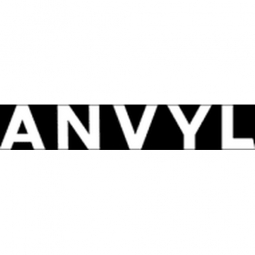Download PDF
Sock Fancy chooses Anvyl for supply chain visibility and growth
Technology Category
- Platform as a Service (PaaS) - Data Management Platforms
- Functional Applications - Enterprise Resource Planning Systems (ERP)
Applicable Industries
- Consumer Goods
- Retail
Applicable Functions
- Logistics & Transportation
- Sales & Marketing
- Business Operation
Use Cases
- Supply Chain Visibility
- Inventory Management
- Track & Trace of Assets
Services
- System Integration
- Software Design & Engineering Services
The Challenge
Sock Fancy was rapidly expanding and needed to scale their supply chain operations. They faced challenges with inefficient communication with overseas manufacturing and design partners, lengthy email chains, lack of process visibility, and technological hassles. These issues made it difficult to maintain their quality of service with the anticipated 10x growth. Managing B2B accounts demanded significant time, leaving little room for other important functions like marketing, trade show placement, and design. The team spent hours following up with upstream supply chain partners to ensure quick and accurate updates for their enterprise customers.
About The Customer
Sock Fancy, launched in 2013, is a company dedicated to helping people find the perfect pair of comfortable, affordable, and stylish socks. They have sold over a million pairs through a subscription service that ships globally. The company caters to both B2B customers and consumers, necessitating a robust global supply chain. With a vision to provide high-quality service and products, Sock Fancy has experienced strong growth, requiring them to scale their operations efficiently. The company is co-founded by Futhum Tewolde, who also serves as the COO.
The Solution
Sock Fancy chose Anvyl as a single hub for their supply chain data to streamline operations. Anvyl's Production Hub allowed them to track progress, communicate with suppliers, and deliver goods on time. The platform provided visibility into each supplier and product's status, enabling quick updates to customers. Anvyl's flexible nature allowed integration with Sock Fancy's existing CRM, eliminating challenges posed by legacy software. Within three to four months, Sock Fancy saw measurable results, including effective updates at every production step and improved service to their customer base. The dashboard-style tracking and management system provided by Anvyl enabled the team to stay informed and share key information quickly.
Operational Impact
Quantitative Benefit
Related Case Studies.
.png)
Case Study
Improving Vending Machine Profitability with the Internet of Things (IoT)
The vending industry is undergoing a sea change, taking advantage of new technologies to go beyond just delivering snacks to creating a new retail location. Intelligent vending machines can be found in many public locations as well as company facilities, selling different types of goods and services, including even computer accessories, gold bars, tickets, and office supplies. With increasing sophistication, they may also provide time- and location-based data pertaining to sales, inventory, and customer preferences. But at the end of the day, vending machine operators know greater profitability is driven by higher sales and lower operating costs.

Case Study
Improving Production Line Efficiency with Ethernet Micro RTU Controller
Moxa was asked to provide a connectivity solution for one of the world's leading cosmetics companies. This multinational corporation, with retail presence in 130 countries, 23 global braches, and over 66,000 employees, sought to improve the efficiency of their production process by migrating from manual monitoring to an automatic productivity monitoring system. The production line was being monitored by ABB Real-TPI, a factory information system that offers data collection and analysis to improve plant efficiency. Due to software limitations, the customer needed an OPC server and a corresponding I/O solution to collect data from additional sensor devices for the Real-TPI system. The goal is to enable the factory information system to more thoroughly collect data from every corner of the production line. This will improve its ability to measure Overall Equipment Effectiveness (OEE) and translate into increased production efficiencies. System Requirements • Instant status updates while still consuming minimal bandwidth to relieve strain on limited factory networks • Interoperable with ABB Real-TPI • Small form factor appropriate for deployment where space is scarce • Remote software management and configuration to simplify operations

Case Study
How Sirqul’s IoT Platform is Crafting Carrefour’s New In-Store Experiences
Carrefour Taiwan’s goal is to be completely digital by end of 2018. Out-dated manual methods for analysis and assumptions limited Carrefour’s ability to change the customer experience and were void of real-time decision-making capabilities. Rather than relying solely on sales data, assumptions, and disparate systems, Carrefour Taiwan’s CEO led an initiative to find a connected IoT solution that could give the team the ability to make real-time changes and more informed decisions. Prior to implementing, Carrefour struggled to address their conversion rates and did not have the proper insights into the customer decision-making process nor how to make an immediate impact without losing customer confidence.

Case Study
Digital Retail Security Solutions
Sennco wanted to help its retail customers increase sales and profits by developing an innovative alarm system as opposed to conventional connected alarms that are permanently tethered to display products. These traditional security systems were cumbersome and intrusive to the customer shopping experience. Additionally, they provided no useful data or analytics.







